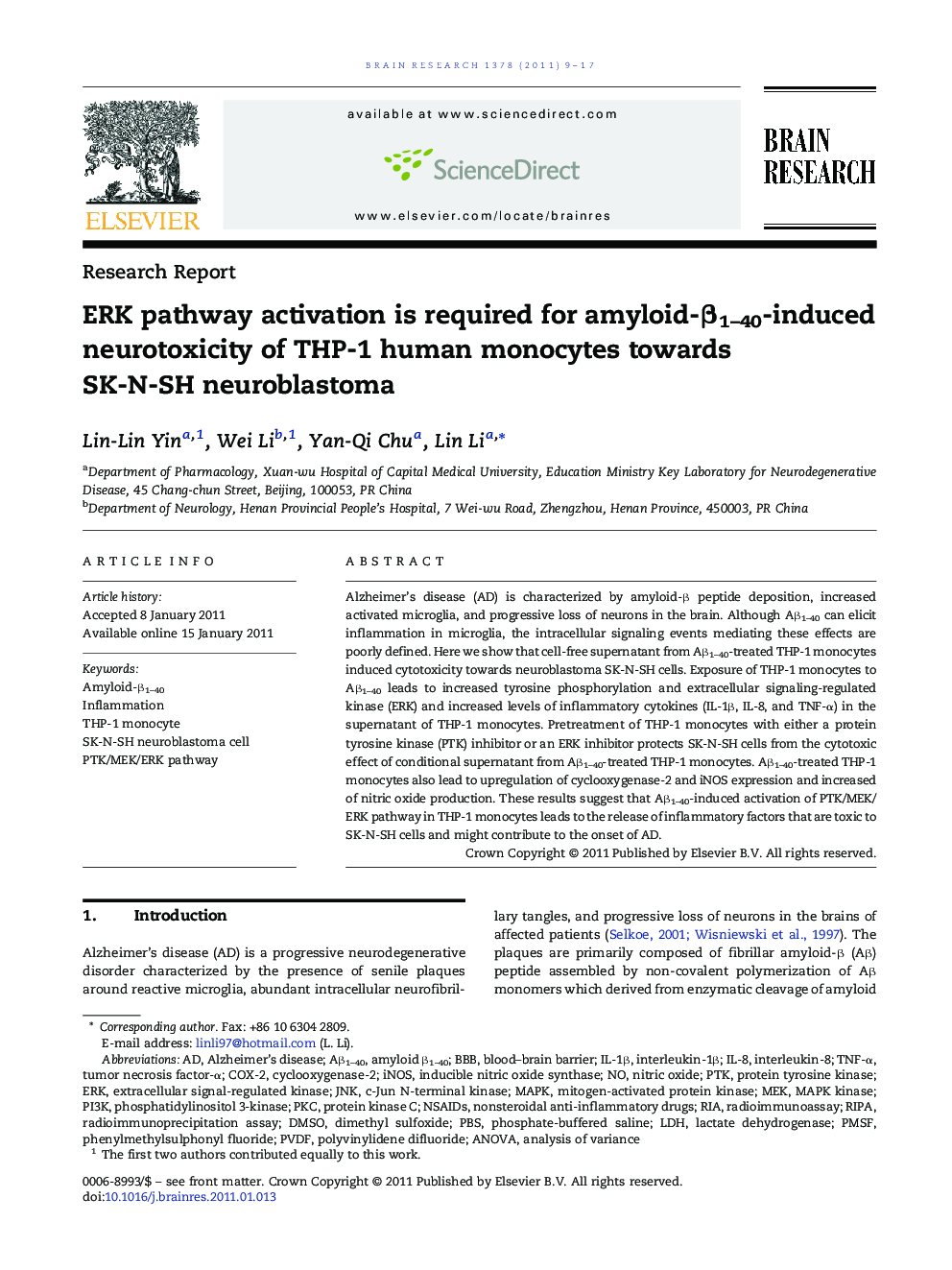| کد مقاله | کد نشریه | سال انتشار | مقاله انگلیسی | نسخه تمام متن |
|---|---|---|---|---|
| 4326100 | 1614061 | 2011 | 9 صفحه PDF | دانلود رایگان |

Alzheimer's disease (AD) is characterized by amyloid-β peptide deposition, increased activated microglia, and progressive loss of neurons in the brain. Although Aβ1–40 can elicit inflammation in microglia, the intracellular signaling events mediating these effects are poorly defined. Here we show that cell-free supernatant from Aβ1–40-treated THP-1 monocytes induced cytotoxicity towards neuroblastoma SK-N-SH cells. Exposure of THP-1 monocytes to Aβ1–40 leads to increased tyrosine phosphorylation and extracellular signaling-regulated kinase (ERK) and increased levels of inflammatory cytokines (IL-1β, IL-8, and TNF-α) in the supernatant of THP-1 monocytes. Pretreatment of THP-1 monocytes with either a protein tyrosine kinase (PTK) inhibitor or an ERK inhibitor protects SK-N-SH cells from the cytotoxic effect of conditional supernatant from Aβ1–40-treated THP-1 monocytes. Aβ1–40-treated THP-1 monocytes also lead to upregulation of cyclooxygenase-2 and iNOS expression and increased of nitric oxide production. These results suggest that Aβ1–40-induced activation of PTK/MEK/ERK pathway in THP-1 monocytes leads to the release of inflammatory factors that are toxic to SK-N-SH cells and might contribute to the onset of AD.
Research Highlights
► Aβ1–40, at 125 nM, induces neurotoxicity to SK-N-SH through activation of THP-1.
► PTK/MEK/ERK activation is required for the cytotoxicity of THP-1 towards SK-N-SH.
► Aβ1–40 stimulates cytokines release of THP-1 monocytes.
► Aβ peptides used in this study are mixture, oligomers maybe the main neurotoxins.
Journal: Brain Research - Volume 1378, 10 March 2011, Pages 9–17